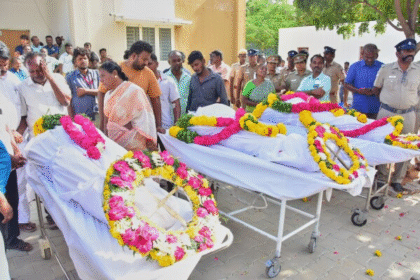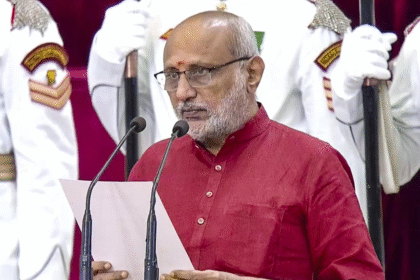COVID-19 Surge in India Explained: Why Experts Say There’s No Need to Panic
New Delhi: The ‘surge’ in COVID-19 cases has been making headlines in India for about a week now. What should one make of the term ‘surge’? Is the rise in the number of cases cause for alarm?
The prevailing notion that ‘COVID-19 is back’ does not pass scientific muster because like any other virus, Sars-Cov-2 (causing COVID-19), never went away. Like all other viruses, it has been circulating all this time and will continue to do so. No virus has been eliminated in human history except smallpox.
The periodic rise in cases is also likely to happen because Sars-Cov-2 is a fast-mutating virus. These are the ‘surges’ that are leading to a misinformed claim that ‘COVID-19 is back’.
Current ‘surge’
According to the data made available by the Union health ministry’s online dashboard, there are 1,010 active cases in India as of May 25. The highest number of active cases are in Kerala (430) followed by Maharashtra (210), Delhi (104) and Gujarat (76).
One of the metrics to understand the numbers is to look at the baseline which reflect the weekly change in the number of cases. Compared with week starting May 19, the highest change in the number of cases has been in Kerala (95 cases more cases this week) and Maharashtra (56 more cases this week),
In such a situation, governments can make additional preparations and ask hospitals to remain at stand by as a standard protocol.
Why this data is not the real picture
The official data has several riders which are often missed in the current discourse and in panicked messages widely circulated on various social media platforms. The most important among them is the positivity rate, i.e, number of tests returning positive out of every 100 tests conducted. This is important to rule out any testing bias.
Usually, when talk around COVID-19 cases going up gains momentum, a higher number of people get tested for the virus. The higher the number of people being tested, the greater are our chances of detecting more cases. This is the case because in the absence of such talk, fewer people get tested, and therefore, the number of people being tested positive is also small. Therefore, it is pertinent to know the positivity rate.
The health ministry website has no updated information on the positivity rate of the current strains.
The fact that Kerala has the highest number of positive cases can, therefore, also be a function of more tests being conducted there.
Virus surveillance
The Indian SARS-CoV-2 Genomics Consortium (INSACOG) is responsible for conducting genomic surveillance and finding out the current status of the strains circulating. Some of the tests that return positive are further analysed to understand the most commonly circulating strain. According to the INSACOG dashboard updated till May 26, JN.1 is the most common circulating strain.
Some cases of a new strain NB.1.8.1 have also been reported but are not reflected in the dashboard.
However, the number of sequences uploaded on the INSACOG dashboard has been extremely low, starting this year, thus seriously limiting the Indian genome sequencing capacity and its surveillance efforts. It is through genome sequencing alone that one can understand the scale of the dominant strain at a given point in time.
In fact, only five centres out of 64 have uploaded the results of sequencing that started in January this year. Two medical colleges of Rajasthan and Gujarat, each, and the country’s apex body, the National Institute of Virology, have done so. Therefore, less-than-adequate genome sequencing can also present a picture which is incomplete.
Even the last INSACOG bulletin, issued on May 15, acknowledges this. “Since the testing and the sampling frequency is less for some parts of India, the overall scenario might not be clear yet,” it says.
Many countries do wastewater surveillance also to study the true prevalence of any strain as it reveals viral load or fragments of virus in sewage.
In India, only a few entities do this in their own capacities. There is no centralised data available on this as the Union government has not taken up wastewater surveillance, even at the start and peak of the pandemic.
WHO’s classification of JN.1 and NB.1.8.1
The World Health Organisation (WHO) classifies new emerging strains under one of the three categories – variants under monitoring (VUM), variants of Interest (VoIs) and variants of Concern (VoCs). The least alarming are the ones classified as VuMs. If a strain is designated as VuM, it is a ‘signal to health authorities that a new strain may require prioritised attention’ over others.
If a strain is classified as VoI, it indicates that it has the ability to spread faster than the previous cousins, cause a slightly more severe disease and ‘suggests a potential emerging risk to global public health’.
The strains classified as VoCs signal the highest degree of change. Such a strain may potentially overwhelm health systems across the world. A VoC can cause ‘detrimental’ change in disease severity, and cause significant immune evasion, that is, the circulating strain is successful in evading the immune system.
Currently, the WHO has classified JN.1 as VoI. NB.1.8.1 has been characterised as VuM.
All currently circulating strains are offshoots of the Omicron variant.
Properties of NB.1.8.1 and JN.1
NB.1.8.1 has a greater ability than its previous cousins to bind to ACE2 receptors. The ACE2 receptors are present in cells of various body parts and they act as entry points for the COVID-19 virus into the body. The COVID-19 virus has what are known as ‘spike proteins’, or simply, spikes present on its outer surface. These spikes of the virus ‘bind’ with ACE2 receptors like lock and key to invade the body.
Thus, the fact that NB.1.8.1 has a greater ability to bind with ACE2 receptors of the body indicates that it can easily gain entry into the body. This can increase the transmission potential of the virus – it can thus spread faster from one person to another.
According to the latest WHO update, limited available evidence from different parts of the world indicates that this strain has led to an increase in hospitalisation numbers.
However, these are early days for full evaluation of the NB.1.8.1. This is the case because the COVID-19 sequences global database, GISAID, has only 518 samples of this strain provided by 22 countries. This number is not enough to study its clinical outcomes in detail.
“The routine clinical surveillance data do not indicate any signs of increased severity associated with NB.1.8.1, compared to previously circulating strains,” says the WHO in its latest update.
“Currently there is no evidence of increases in indicators like COVID-19-related ICU admissions and deaths per hospitalisations, or all-cause mortality,” it adds.
As far as JN.1 is concerned, which is currently the dominant strain in India, it has a growth advantage over previously circulating strains, as per the WHO. In other words, it can spread faster than other Omicron strains.
However, the neutralisation capacity of the antibodies present in the immune system, i.e., their ability to neutralise or kill the virus is same for JN.1 as it is for other strains of the Omicron variant which had been circulating earlier.
The WHO says the currently available evidence suggests that the additional health risk posed by JN.1 is low at the global level. The increase in hospitalisation numbers with JN.1 is unclear at the moment.
There have been no reports of changes in disease severity with JN.1 as compared to other versions of the Omicron variant.
According to this paper, JN.1 can cause fever, sore throat, excessive discharge of mucus from nose, nasal congestion, persistent dry cough, fatigue, headache, loss of taste, loss of smell, muscle pain, conjunctivitis, diarrhoea, and vomiting.
“Patients infected with the JN.1 strain may experience more severe muscle fatigue and exhaustion compared to typical COVID-19 cases,” it says.
“Mild symptoms can often be managed with symptomatic care and do not require immediate medical attention,” it adds.
Patients who are immunocompromised – those whose immune systems are already compromised – due to certain illnesses are always at risk of developing a severe disease than others, be it any strain of the virus.
Another risk associated with any variant of Sars-Cov-2 infection is Long COVID. While all the currently circulating strains are mostly known to cause a mild version of the disease, the risk of Long COVID is real and pertinent.
WHO’s technical lead on COVID-19, Maria Van Kerkhove, says, there is no substantial clarity as to how COVID-19 infections can impact our body in multiple ways even if one has got rid of the infection. “Our concern is [that] in five years from now, 10 years from now, 20 years from now, what we are going to see in terms of cardiac impairment, of pulmonary impairment, of neurological impairment [caused due to long term impacts of new strains of the virus which would continue to emerge],” she says referring to Long COVID.
Although the fear of the ‘unknowns’ of this virus has subsided to a greater extent, not everything is known about the virus yet, as Kerkhove says.
The best and the easiest way is, therefore, to take precautions which are not hard to follow. Vulnerable populations like elderly, people with comorbidities and compromised immune systems, especially need to take care. Insofar as the general population, following these precautions, like masking up in crowded places, can always come handy to dodge the virus and its long term implications.
Also Read: Melania Trump Denies Viral Harvard Rumors About Son Barron Trump as ‘Completely False’







